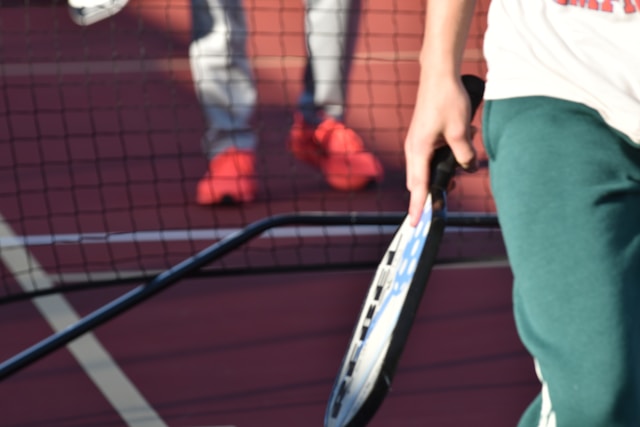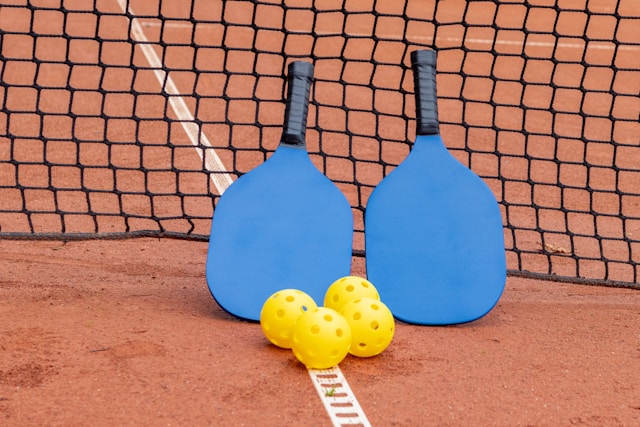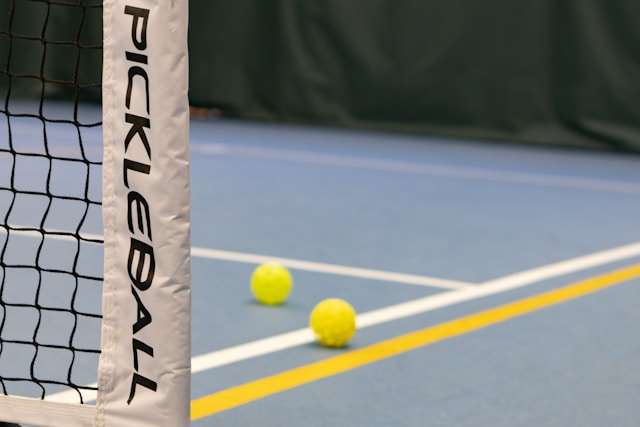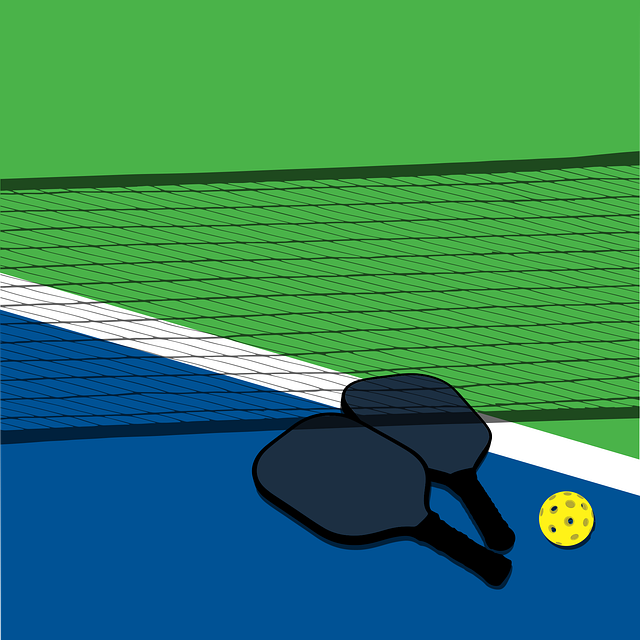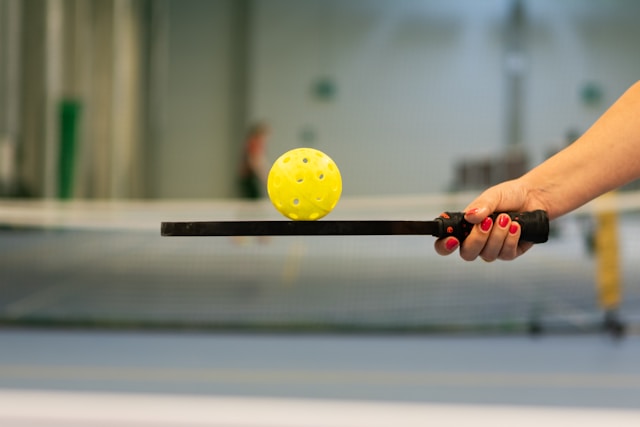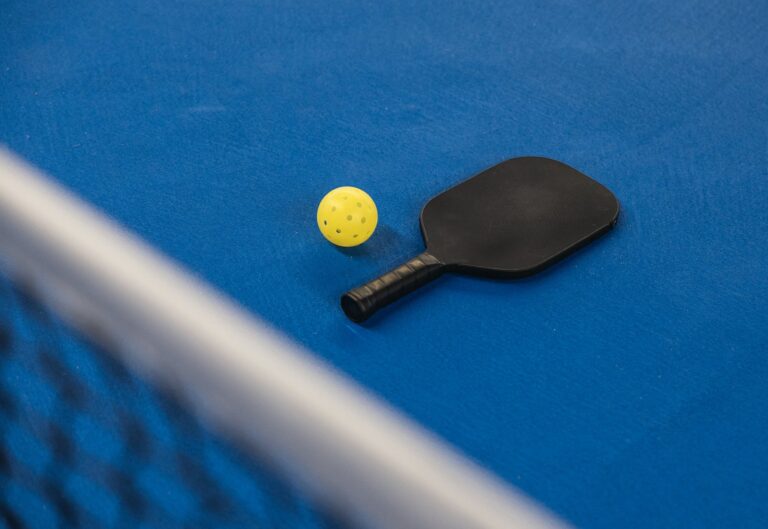Winning Strategies For Doubles In Pickleball
There are some affiliate links below, but they are all products I highly recommend. For more info, view my disclosure here.
Are you tired of losing in doubles pickleball matches? Do you want to improve your game and dominate the court? Look no further, because this article will provide you with winning strategies for doubles in pickleball.
Effective communication with your partner is key to success in doubles pickleball. You must be able to communicate quickly and efficiently in order to make split-second decisions on the court.
Developing a clear court coverage system with your partner will help ensure that both players know their responsibilities and can move smoothly around the court.
Mastering the third shot drop and using the lob as a strategic tool are also important tactics to add to your arsenal.
Staying aggressive at the net will allow you to control the pace of the game and put pressure on your opponents.
By implementing these winning strategies, you will be able to elevate your doubles pickleball game to the next level.
Effective Communication with Your Partner
Don’t underestimate the power of good communication – it’s key to crushing your opponents and dominating the court with your pickleball partner. When playing doubles in pickleball, effective communication is essential to winning.
You and your partner must be on the same page at all times, and you can achieve this by using clear and concise language. One way to communicate effectively is by using hand signals. You and your partner should agree on a set of signals that indicate what type of shot you plan to make. For example, you might use a fist to indicate that you plan to hit a drive, or a flat hand to indicate a dink. This way, your partner can anticipate your shot and be in position to make the next play.
Another important aspect of communication is being vocal. You and your partner should be talking to each other throughout the game, calling out the ball’s location and giving each other encouragement. You can also use verbal cues to signal your intentions, such as saying “mine”when you plan to take a shot or “yours”when you want your partner to hit the ball.
Effective communication with your partner is crucial when playing doubles in pickleball. By using hand signals and being vocal, you can keep each other informed and anticipate each other’s moves. With good communication, you and your partner can work together to dominate the court and come out victorious.
Developing a Court Coverage System
You’ll want to create a court coverage system that maximizes your team’s efficiency and minimizes gaps in coverage. This means that you and your partner need to have a clear understanding of who covers which areas of the court.
One effective strategy is to divide the court into two halves, with each player responsible for their own half. This allows for quick and efficient movement and ensures that both players are always in position to make a play.
Another important aspect of developing a court coverage system is communication. You and your partner need to be constantly communicating and adjusting your positions based on the flow of the game. This means calling out who will take the ball, where you are moving, and any other important information. Communication is key to staying in sync with your partner and preventing any confusion or mistakes.
It’s important to practice your court coverage system regularly. This will help you and your partner develop a rhythm and become more comfortable with each other’s playing styles. You can also use practice time to experiment with different strategies and adjust your system based on what works best for your team.
With enough practice and communication, you’ll be able to develop a highly effective court coverage system that will give you a competitive edge in doubles pickleball.
Mastering the Third Shot Drop
Get ready to perfect your game by mastering the third shot drop, a crucial move in competitive pickleball. This shot is usually played by the serving team and is used to slow down the game and take control of the net.
To execute the perfect third shot drop, you need to aim for the kitchen line and hit the ball with a soft and controlled touch. Make sure to hit the ball with a low trajectory and just enough power to clear the net.
One of the most important things to keep in mind when executing the third shot drop is to anticipate your opponent’s positioning. If your opponent is standing at the baseline, you can hit the ball with more power and angle to make it harder for them to return.
However, if your opponent is already at the net, you need to be more precise with your shot and aim for a spot that will force them to move back.
Another key factor to keep in mind when mastering the third shot drop is footwork. You need to be in a good position to hit the ball and then quickly move back to the baseline to prepare for the next shot.
Practice your footwork by moving laterally and staying low to the ground. With enough practice and dedication, you’ll be able to execute the perfect third shot drop and take your pickleball game to the next level.
Using the Lob as a Strategic Tool
Using the lob can be a strategic tool to gain an advantage in your game. It can help you put your opponents on the defensive and allow you to take control of the point.
The lob is a shot that is hit high and deep over the net, which forces your opponents to move back and hit the ball from a defensive position. To use the lob effectively, you need to be able to hit it accurately and with the right amount of power.
If you hit the lob too short, your opponents will be able to attack the ball and put you on the defensive. On the other hand, if you hit the lob too hard, it may go out of bounds, giving your opponents the point. You need to find the right balance between power and accuracy to hit a successful lob.
Another way to use the lob is to use it as a setup shot for a smash or a drop shot. By hitting a high lob, you can force your opponents to move back to the baseline, giving you more time to set up your next shot. You can then follow up with a smash to put the ball away or a drop shot to catch your opponents off guard.
Using the lob as a setup shot is a great way to keep your opponents guessing and to stay in control of the point.
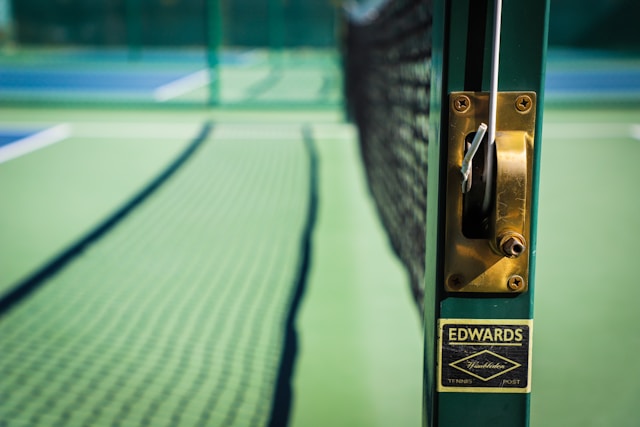
Staying Aggressive at the Net
Staying aggressive at the net requires quick reflexes and a willingness to take risks in order to put pressure on your opponents. When you and your partner are playing doubles in pickleball, it’s important to maintain a strong presence at the net.
This means being ready to pounce on any balls that come your way and being proactive in your movements. One way to stay aggressive at the net is to position yourself in a way that allows you to be in control of the game.
This means standing close to the net and being ready to intercept any shots your opponents make. You should also be ready to make quick, decisive movements in order to get to the ball before your opponents have a chance to react.
Another important aspect of staying aggressive at the net is to keep your opponents guessing. This means mixing up your shots and being unpredictable in your movements.
If you always hit the same shot or move in the same way, your opponents will eventually catch on and be able to anticipate your next move. By staying aggressive and keeping your opponents on their toes, you’ll be able to gain the upper hand and control the game.
By effectively communicating with your partner, developing a court coverage system, mastering the third shot drop, using the lob as a strategic tool, and staying aggressive at the net, you can take your doubles game to the next level.
Remember, practice makes perfect. Don’t be afraid to experiment with different strategies and find what works best for you and your partner.
With dedication and hard work, you can become a formidable force on the pickleball court. So grab your partner and get out there, have fun, and dominate the doubles game!
